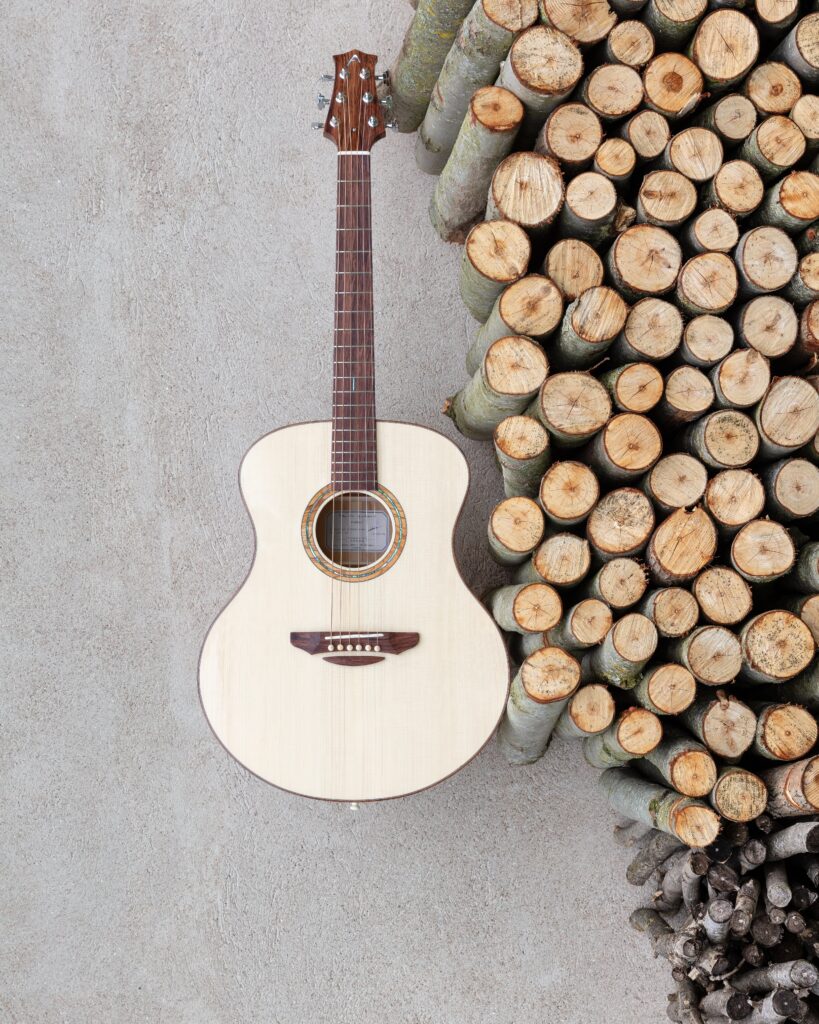What are the Different Types of Tonal Woods Used in Guitars?
Most guitars are made from wood, and there’s a wide variety of woods that are used to make both electric and acoustic guitars. You may think these different woods are used mainly for aesthetic reasons — different woods have different looks. But there’s another reason besides looks for using one type of wood over another.The wood used to make a guitar affects its tone. Different woods used for different parts of the guitar, like the body, neck and fingerboard, can give your guitar a distinct sound. With its effect on tone, taking the type of tonal wood used into consideration when buying a new guitar or bass is important.
Different Woods Give Different Tones
Every guitar or bass will sound a little different even if they look the same. This can come down to how someone plays, but the tonal wood used to make the guitar is also a factor.Depending on the type of wood and which part of the guitar it was used to make, the material has a big effect on the instrument’s tone. Not all woods are suitable for all guitars, so finding one with a sound that you like is key.The types of wood used to make guitars are called “tonewoods.” Many of these tonewoods give their instrument a distinct sound. We’ve outlined some of the more common and less common types of tonewoods below to help you pick an instrument with a sound that you’ll love.
Common Woods
There are some standard woods that are more common in guitars. Here are the more common tonewoods used to make guitars:
- Alder: Alder is a little less common compared to these woods, but it’s a favorite tonewood of Fender. It’s a light wood that gives your playing a warm tone. It also gives a bit more of an emphasis on higher tones.
- Ash: You can get a lot of variance in tone even with this one type of wood. A harder ash wood will give you a lot of a bite, like mahogany. Or, a more lightweight swamp ash will have a warmer tone with great upper and mid ranges.
- Basswood: A softer wood, basswood makes a great jack-of-all-tones type of guitar. It doesn’t have one main tonal quality — it has many. It has a bit of bite, a bit of a growly sound, and a little sweetness. With this range in tone, basswood is the tonewood for you if you like to really customize your sound.
- Mahogany: Mahogany is a common tonewood to use for the body of the guitar. It gives a pleasant, warm tone with a greater emphasis on the lower end.
- Maple: Maple is a hard, dense wood that is usually used for the neck of the guitar, but can also be used for the top of the body and fingerboards. Some tonewoods will give your sound a smooth tone, but not maple — if you like a bit of a bite in your sound, maple is a great pick.
- Rosewood: A Rosewood construction can either fall under the category of Brazilian Rosewood or Indian Rosewood. This wood provides a bit of clarity to the low end and mid range due to this wood’s dense nature and tonality. Typically used for backs and sides of acoustic and electric guitars, the wood is able to provide a warm and resonant sound that some consider the best kind of wood or “holy grail” for guitar construction.
When you’re looking for a new guitar, you can’t go wrong with any of these common tonewoods. But if you’re a little pickier about the type of tone you want, paying attention to the tonewood will help you find the perfect guitar to match your playing style and tastes.
Less Common Woods
These woods are more exotic, making them typically more expensive and less common. But like the more common tonewoods, they each have a unique sound:
- Bubinga: Bubinga is a tropical wood that is a bit similar to maple and rosewood. However, it has a brighter tone than rosewood and less of an emphasis on the high- and mid-range tones.
- Koa: Koa is a tonewood that comes from Hawaii and is usually used for the tops of guitar bodies. It’s often paired with mahogany. Koa gives the most emphasis on the higher range and some in the midrange.
- Padouk: This tonewood is not very common and is not as popular. It can create a lot of unique tones depending on where it’s used on the guitar, but a major downside is its weight. It’s pretty heavy compared to other tonewoods.
For a more unique sound, one of these exotic tonewoods could be what you’re looking for.
